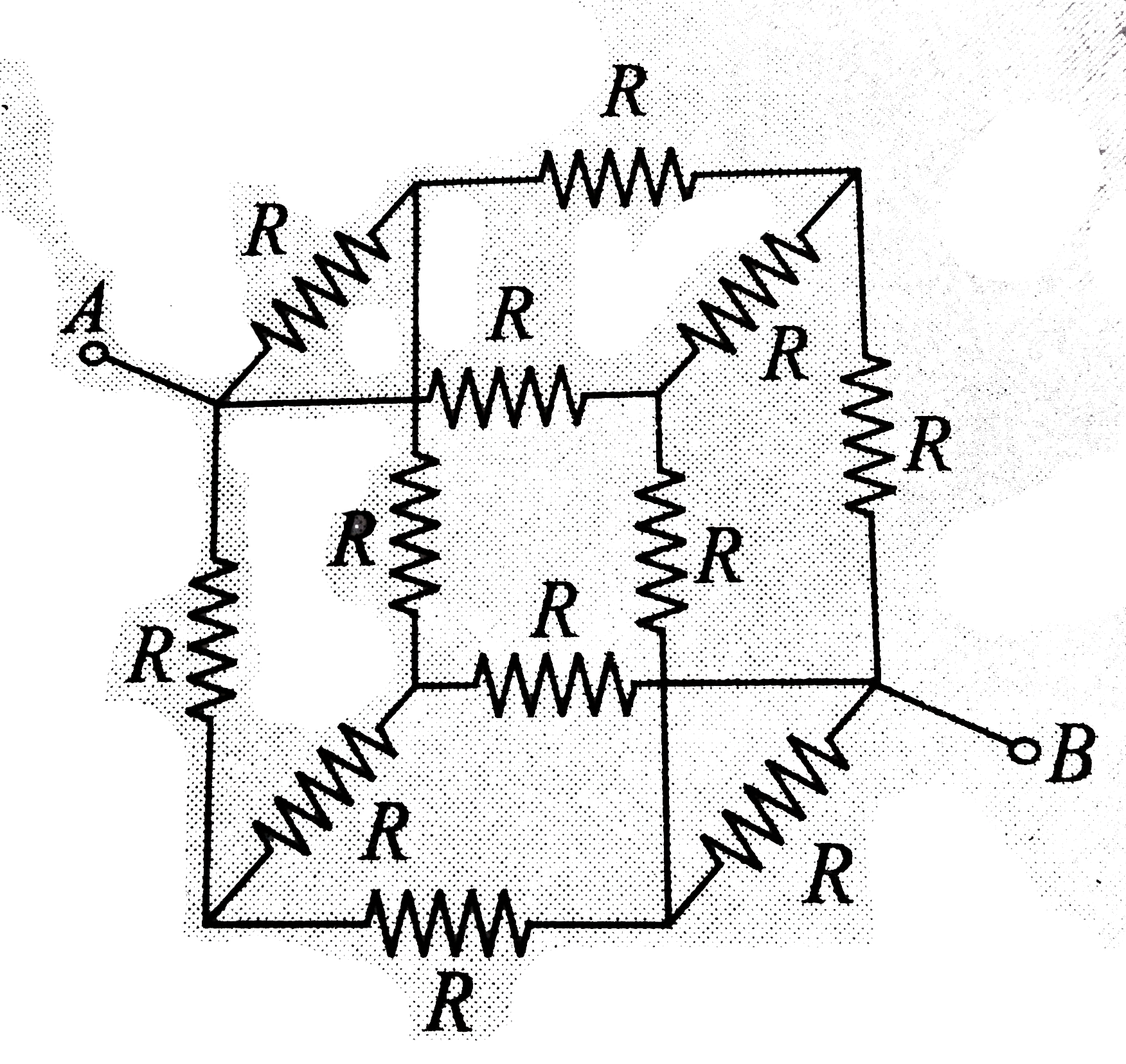All the edges of a block with parallel faces are unequal. Its longest edge is twice its shortest edge. The ratio of the maximum to minimum resistance between parallel faces is.
The correct Answer is:4
To solve the problem of finding the ratio of the maximum to minimum resistance between the parallel faces of a block with unequal edges, we can follow these steps:
Step 1: Define the dimensions of the block
Let:
- H = height (shortest edge)
- B = breadth
- L = length (longest edge)
Given that the longest edge is twice the shortest edge, we can express this as:
L=2H
Step 2: Write the expressions for resistance
The resistance R between two parallel faces of a block is given by the formula:
R=ρ⋅LA
where ρ is the resistivity of the material, L is the length of the current path, and A is the cross-sectional area.
We will calculate the resistance for three different orientations:
1. Resistance along the length L:
- Length = L
- Area = B×H
RL=ρ⋅LB⋅H
2. Resistance along the breadth B:
- Length = B
- Area = L×H
RB=ρ⋅BL⋅H
3. Resistance along the height H:
- Length = H
- Area = L×B
RH=ρ⋅HL⋅B
Step 3: Identify maximum and minimum resistances
From the expressions:
- RL is the maximum resistance since L is the longest edge.
- RH is the minimum resistance since H is the shortest edge.
Step 4: Calculate the ratio of maximum to minimum resistance
We need to find:
RLRH
Substituting the expressions for RL and RH:
RLRH=ρ⋅LB⋅Hρ⋅HL⋅B=L2H2
Step 5: Substitute the relationship between L and H
Since we have L=2H, substituting this into the ratio gives:
RLRH=(2H)2H2=4H2H2=4
Final Answer
The ratio of the maximum to minimum resistance between the parallel faces is:
4
Let:
- H = height (shortest edge)
- B = breadth
- L = length (longest edge)
L=2H
The resistance R between two parallel faces of a block is given by the formula:
R=ρ⋅LA
where ρ is the resistivity of the material, L is the length of the current path, and A is the cross-sectional area.
- Length = L
- Area = B×H
RL=ρ⋅LB⋅H
- Length = B
- Area = L×H
RB=ρ⋅BL⋅H
- Length = H
- Area = L×B
RH=ρ⋅HL⋅B
From the expressions:
- RL is the maximum resistance since L is the longest edge.
- RH is the minimum resistance since H is the shortest edge.
We need to find:
RLRH
Substituting the expressions for RL and RH:
RLRH=ρ⋅LB⋅Hρ⋅HL⋅B=L2H2
Since we have L=2H, substituting this into the ratio gives:
RLRH=(2H)2H2=4H2H2=4
The ratio of the maximum to minimum resistance between the parallel faces is:
4
Similar Questions
n equal resistors are first connected in series and then connected in parallel. What is the ratio of the maximum to the minimum resistance ?
View SolutionA conductor having cubold shape has dimensions in ratio 1: 2:5, the ratio of maximum to minimum resistance across two opposite faces is
View SolutionA metal block has lengths 50 cm, breadth 30cm and thickness 20cm. When current passes through it parallel to its length and parallel to its breadth, the ratio of maximum to minimum resistance of that block is
View SolutionDimensions of a block are 1cm×1cm×100cm. If specific resistance of its material is 3×10−7ohm−m, then the resistance between the opposite square faces is
View SolutionTwelve identical resistances arranged on all edges of a cube. The resisors are all the same. Then find the equivalent resistance between the edges A and B as shown in.

View SolutionComprehesion-I
Let k be the length of any edge of a regular tetrahedron (all edges are equal in length). The angle between a line and a plane is equal to the complement of the angle between the line and the normal to the plane whereas the angle between two plane is equal to the angle between the normals. Let O be the origin and A,B and C vertices with position vectors →a,→b and →c respectively of the regular tetrahedron.
The angle between any edge and a face not containing the edge is
View SolutionName the pairs of all possible parallel edges of the pencil box whose figure is shown in Figure.
View SolutionThe dimensions of a block are 1cm×1cm×100cm. If the specific resistance of its material is 2×10−7ohm×metre, then the resistance between the opposite rectangular faces is
View SolutionComprehesion-I
Let k be the length of any edge of a regular tetrahedron (all edges are equal in length). The angle between a line and a plane is equal to the complement of the angle between the line and the normal to the plane whereas the angle between two plane is equal to the angle between the normals. Let O be the origin and A,B and C vertices with position vectors →a,→b and →c respectively of the regular tetrahedron.
The angle between any two faces is
View SolutionLet k be the length of any edge of a regular tetrahedron (a tetrahedron whose edges are equal in length is called a regular tetrahedron). Show that the angel between any edge and a face not containing the edge iscos−1(1/√3) .
View Solution
